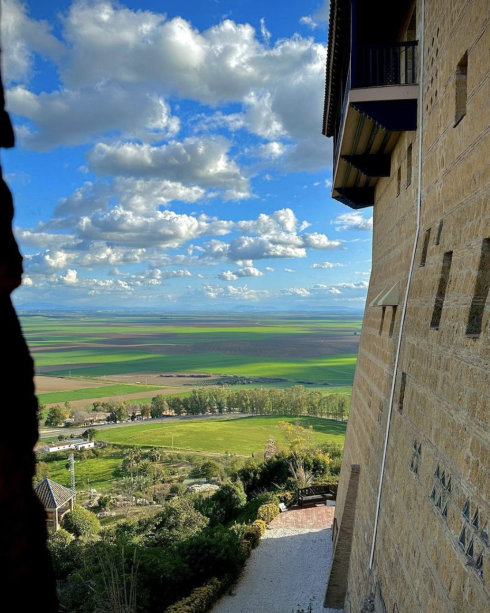CARMONA, Sevilla is set to become a UNESCO World Heritage site, after the Spanish Historical Heritage Association (Consejo de Patrimonio Historico) approved its nomination last week.
The association met in Bilbao on October 27 to discuss which Spanish locations should be put forward for consideration as future UNESCO world heritage sites.
Reflecting the ‘natural and cultural diversity of the country’, selected spots must stay on the list for a year to be seriously considered.
Here’s why we think Carmona, just 30 minutes from Sevilla, deserves a spot.

A rich history
One of the oldest cities in mainland Europe, the many archaeological sites around Carmona bear witness to its history, dating back over 6,000 years. The necropolis reveals important details about everyday life in the 1st and 2nd century BC. The Tomb of the Elephant is believed to have been a temple for the little known Roman god, Mithras. Meanwhile, the Servilia Tomb is more like a sprawling villa, with fascinating murals and a huge courtyard. Free to EU visitors, Carmona’s archaeological sites are worth a visit.

A walled city during the Roman period, two of Carmona’s gates still stand. Both the Puerta de Córdoba and Puerta de Sevilla are in a great condition and give an insight into Andalucia’s history as both a Moorish and Catholic stronghold. Once a defensive wall during Moorish reign, the Puerta de Córdoba was decorated with beautiful baroque and neoclassical designs after the Catholics regained power. The Puerta de Sevilla, is an impenetrable stronghold whose towers now provide visitors with sweeping views over the city.
Like many churches in Spain, La Iglesia de Santa Maria is built on the site of an old mosque. In keeping with Andalucian-gothic architecture, the sprawling orange naves stand out against a tiled roof. The church has retained the original Moorish patio and if visitors venture inside, they will be rewarded by an impressive vaulted roof and gilded altar.
The city museum, found in a 16th century palace, also houses many impressive artefacts such as Roman ceramics. Although small, the museum gives a great overview of the city’s history and has a delightful internal courtyard.
Unique squares
The Plaza del Mercado is a must see for any visit to Carmona. Surrounded by arches with red and white detailing, the square is reminiscent of Latin America. A former monastery, today the square is home to local cafes, restaurants and shops.

The nearby Plaza de San Fernando was originally much like any other Spanish square but thanks to a restoration error is now uniquely circular. The plaza is surrounded by tall, colourful houses, whose residents used to watch bullfights in the square below.
Colourful cobbles
In keeping with Andalucian tradition, Carmona is filled with white washed buildings, but touches of colour on the windows and doorways make the city even more picturesque. Wander along the cobbles or seek out the lovely Casa Palacio de Los Aguilar and Palacio de los Rueda.

The Jewish quarter is similarly filled with history and charm, with some of Carmona’s oldest churches and impressive ‘Casa Palacios’ which have now been converted into luxury hotels. Check out Casa Palacio de Los Lasso or Casa Palacio Casa de Carmona to indulge in Carmona ‘s Mudejar architecture.
The Portuguese way
As you wander through the city, you may notice touches of nearby Portugal’s design and architecture. Throughout Carmona, there are houses covered entirely in tiles and the town hall houses a 2nd century mosaic. Look out for El Salvador Church and the Priory of Santa Maria as both are adorned with blue and white tiles.
Great cuisine
The city has a wide variety of restaurants for every budget and taste from La Yedra, a Michelin star restaurant specialising in traditional Andalucian cuisine, to wine and tapas bar Damajuana Abacería. If you good vibes and live music, don’t miss Karma, set in a old olive press with a charming courtyard and delicious cocktails.

Historic Hotels

Carmona’s Parador de Turismo, or state-run hotel, is found in the ruins of what was once a Moorish castle and favourite residence of King Pedro I. Renovated to its former glory, the parador is a homage to Andalucia’s history, with high Moorish arches, typical courtyards and water features throughout. The terrace and swimming pool offer a panoramic view of the city and surrounding countryside, where visitors can enjoy walking or cycling.

How to visit Carmona
Carmona is only a 30 minute drive from Sevilla but visitors can also catch a bus from the Prado de San Sebastian bus station in just 40 minutes.
READ MORE:


